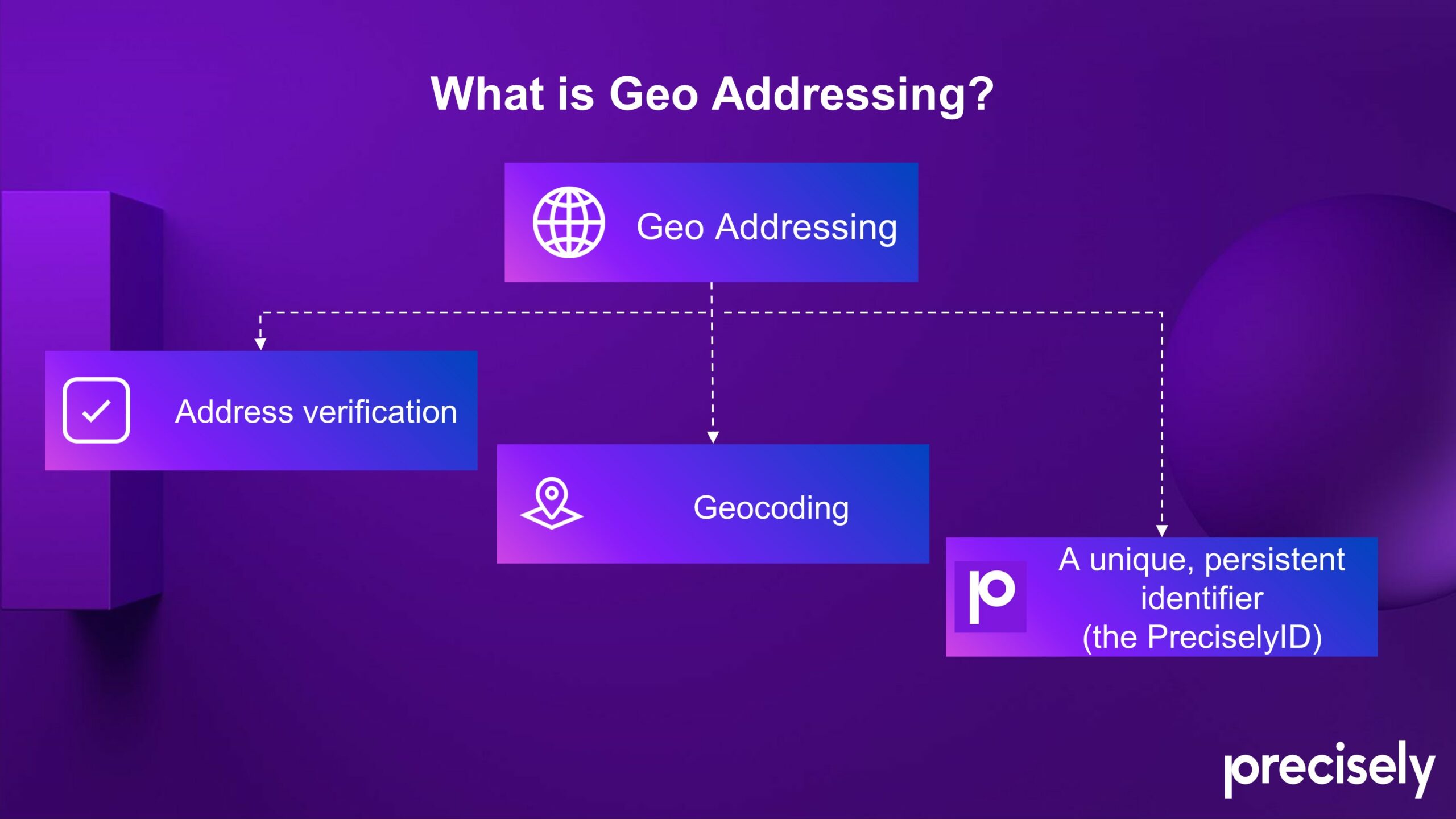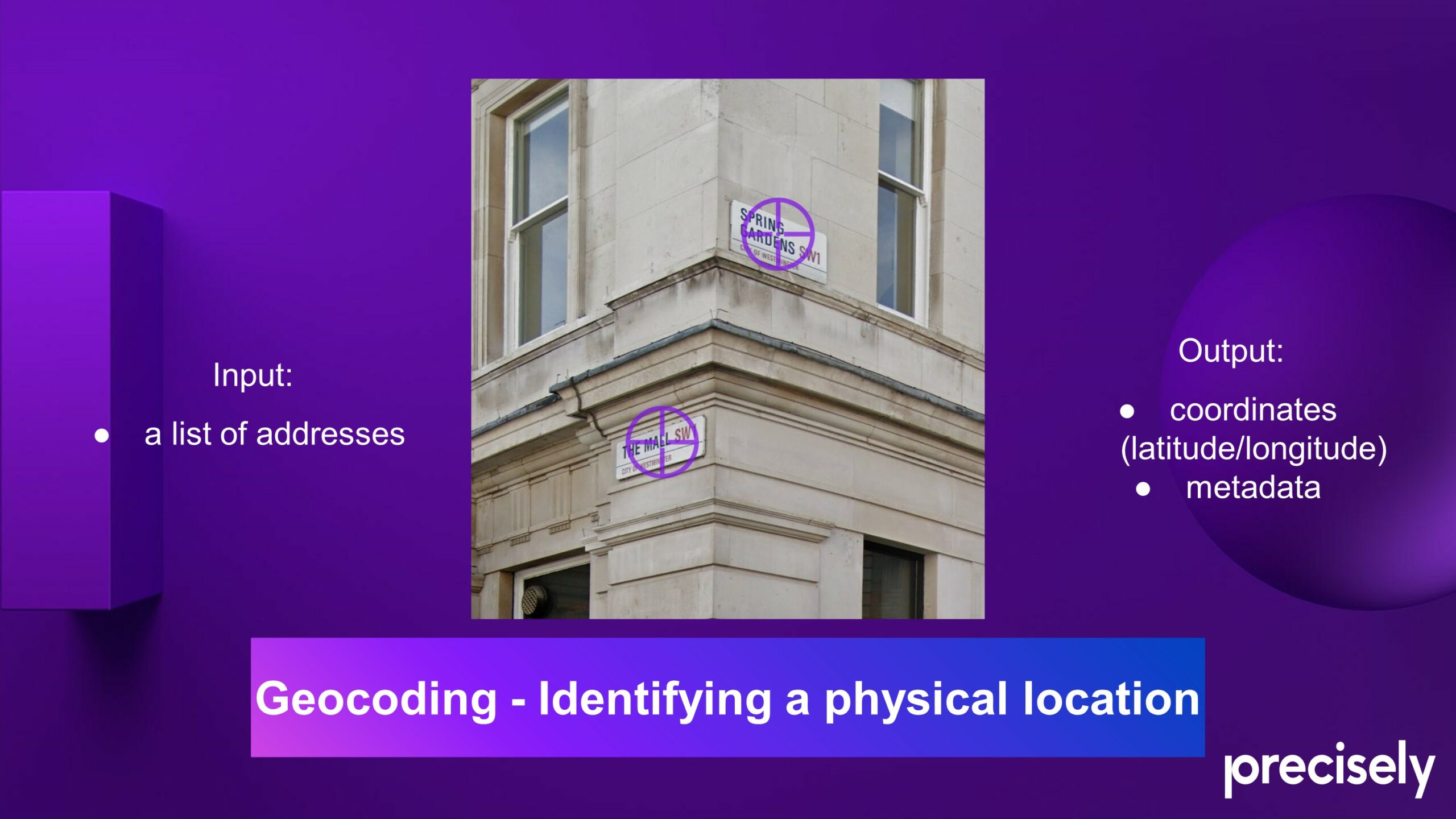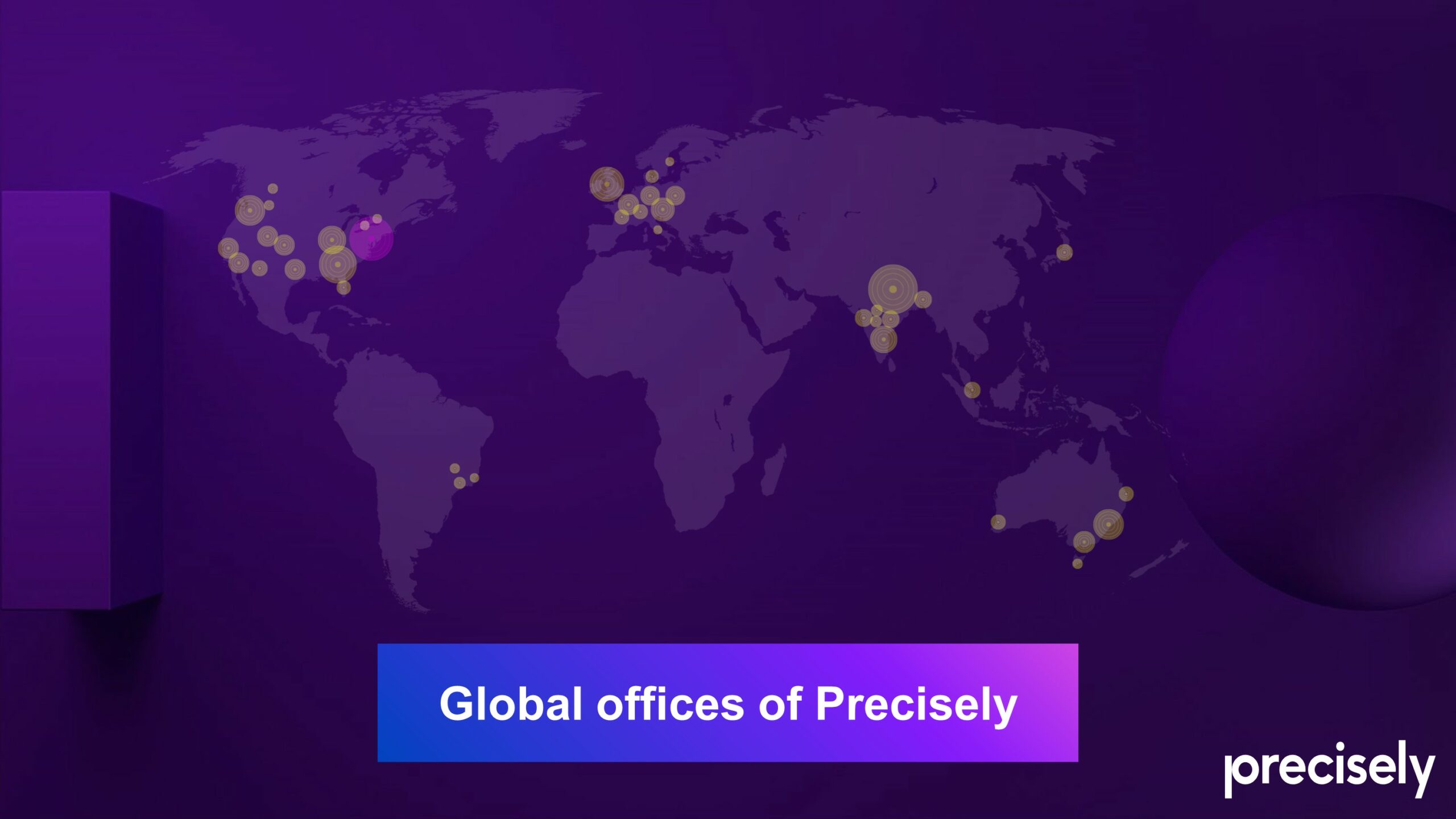
Plenty of SAR Techniques, Plenty of Applications
Synthetic Aperture Radar technology utilizes radar pulses to create detailed images or three-dimensional reconstructions of objects, such as landscapes or buildings. SAR is particularly valuable for EO as it can, unlike optical satellites, penetrate through clouds and operate in all weather conditions, both day and night. Various specialized techniques have been developed within the field of SAR technology, each suited to different applications. Here are a few types:
Most popular SAR techniques
1. InSAR (Interferometric SAR): This method involves using two or more SAR images of the same area taken from slightly different positions. By comparing these images, InSAR can measure changes in the Earth’s surface with high precision. This is useful for monitoring land subsidence, earthquakes or volcanoes.
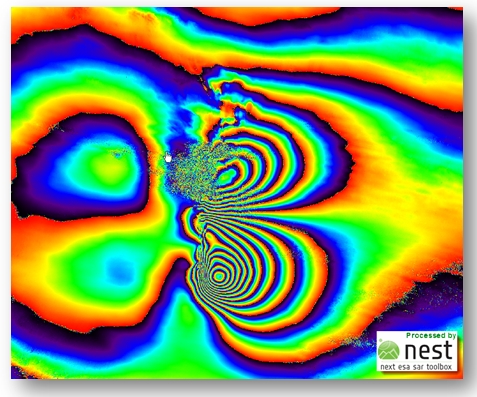
Interferogram – product of InSAR. Source: Copernicus.eu
2. DInSAR (Differential InSAR): An extension of InSAR, DInSAR uses differences between multiple interferograms taken at different times to measure surface changes over time more accurately. It is highly effective for tracking slow geological movements and the effects of human activities on the environment.
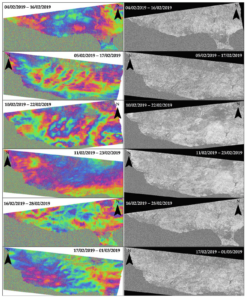
Differential InSAR. Source: MDPI
3. PSInSAR (Persistent Scatterer InSAR): This technique focuses on points in a radar image that remain coherent over a sequence of SAR images. It provides highly accurate measurements of very slow ground deformation over time. PSInSAR is particularly useful in urban areas where buildings or other structures provide consistent, reflective surfaces. This technique may be useful for displacement monitoring. Very insightful article is about Dutch Railway Monitoring using PSInSAR.
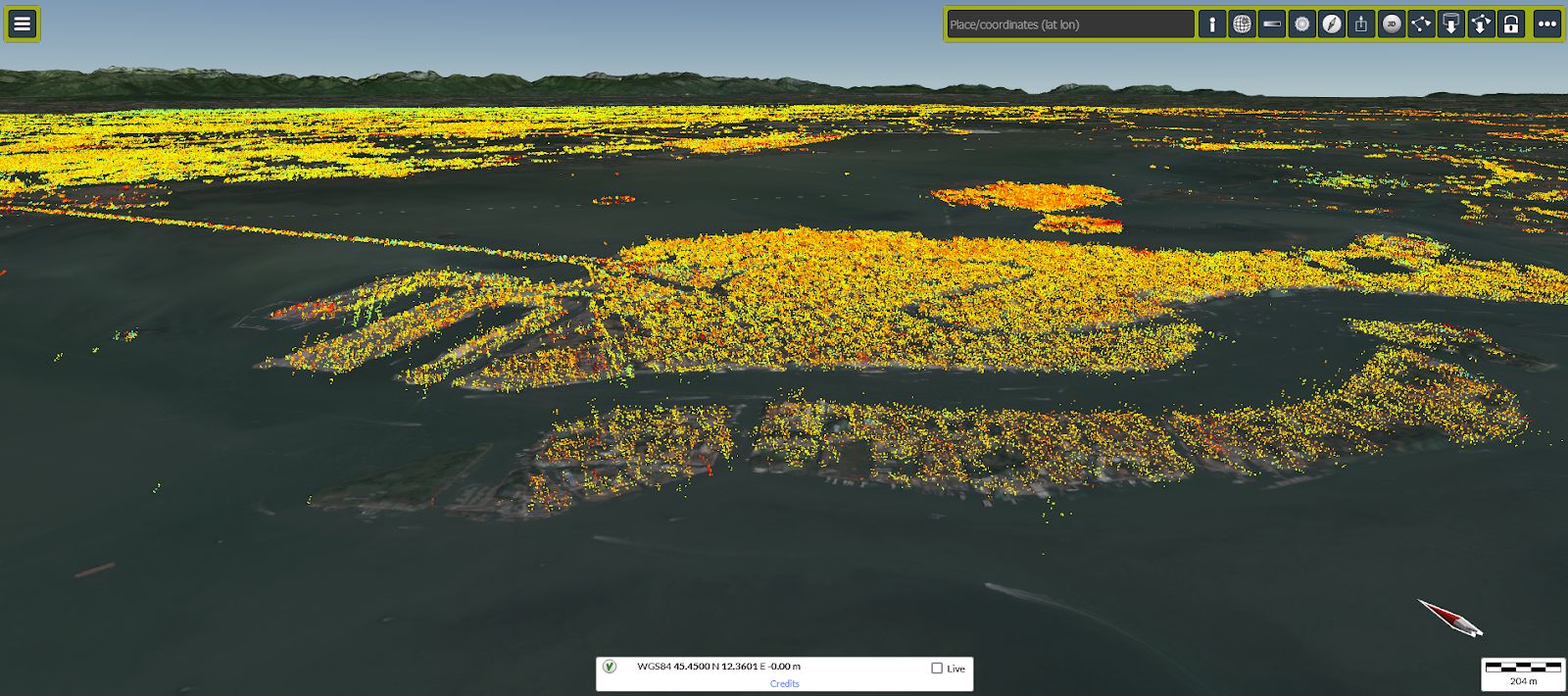
Venice and PS points. Source: EGMS
4. PolInSAR (Polarimetric InSAR): This method combines polarimetry and interferometry to analyze the scattering properties of targets in multiple polarizations. PolInSAR can provide additional information about the structure and properties of surfaces and objects, such as vegetation layers, and is useful in forestry and agriculture.
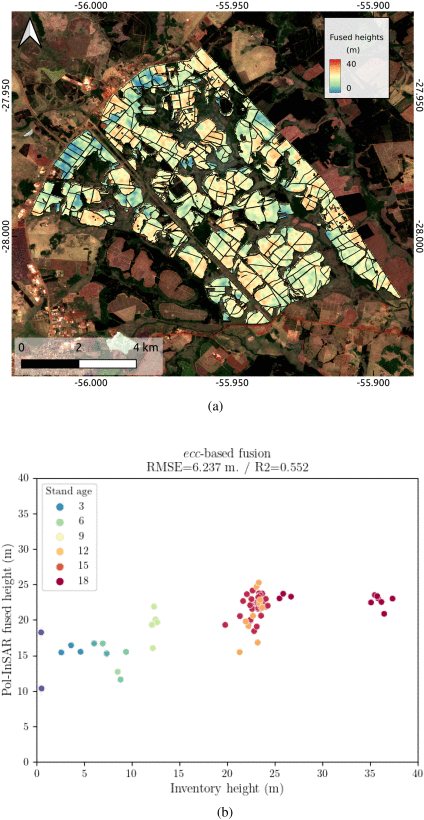
Determining the height of trees using PolInSAR. Source: https://ieeexplore.ieee.org/document/10423776
5. ScanSAR: This technique allows for wide-area imaging by using a modified scanning technique with the radar antenna. ScanSAR achieves broader coverage by reducing the radar resolution, making it effective for large-scale environmental monitoring, such as ice-sheet dynamics, large-scale deforestation, and flood extent mapping.
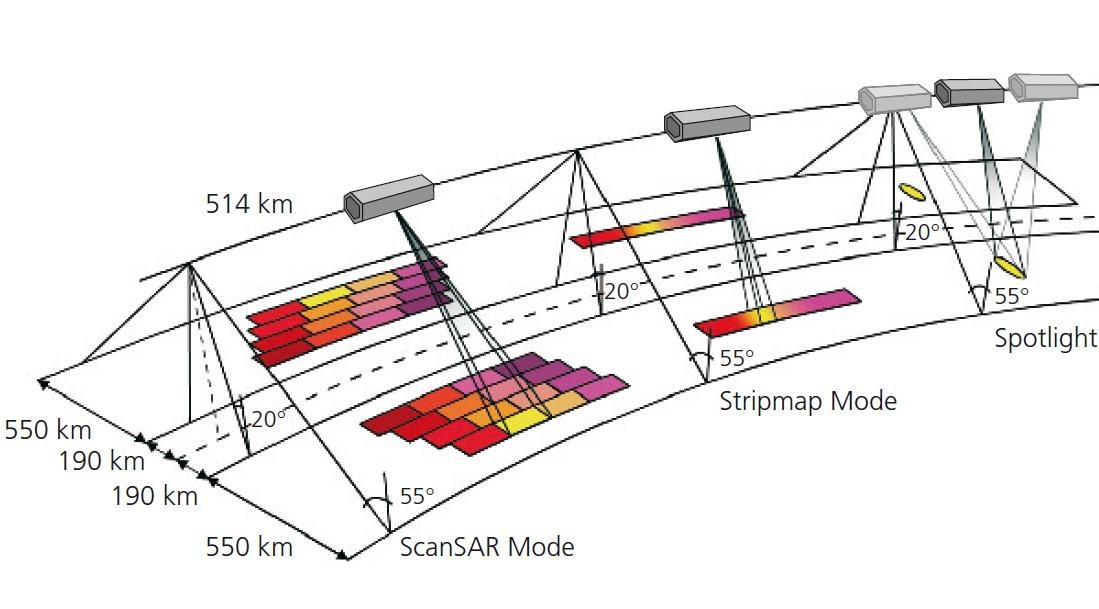
Satellite measurement modesL ScanSAR, Stripmap, Spotlight. Source: ResearchGate
6. TOPSAR (Terrain Observation by Progressive Scans SAR): An advanced form of ScanSAR, TOPSAR utilizes a special scanning technique that progressively steers the antenna along the flight direction. This method reduces scalloping effects and improves image quality over large areas, which is beneficial for ocean monitoring and environmental studies.
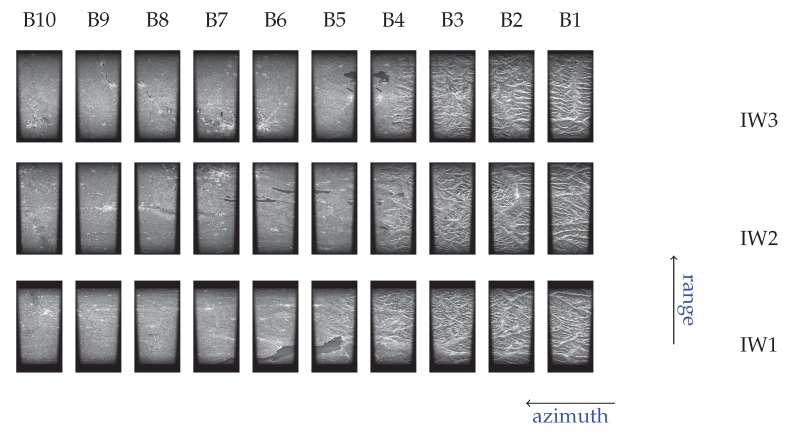
TOPS image result. Source: https://www.ncbi.nlm.nih.gov/pmc/articles/PMC6695588/
7. GMTI (Ground Moving Target Indication) – SAR-GMTI: GMTI technology is designed to detect and track moving objects on the ground, such as vehicles. By comparing multiple SAR images taken over the same area at different times, GMTI can isolate and identify movements within the scene, useful for surveillance and reconnaissance missions.
Tracking velocity of moving objects using SAR-GMTI. Source: ResearchGate
8. Compact Polarimetry SAR: This is a simplified form of full polarimetric SAR that transmits and receives radar signals in more than one polarization, but not all possible polarizations. It offers some of the benefits of full polarimetry but with reduced data volume and complexity. This technique can be used in applications like agriculture, wetlands monitoring, and soil moisture estimation.
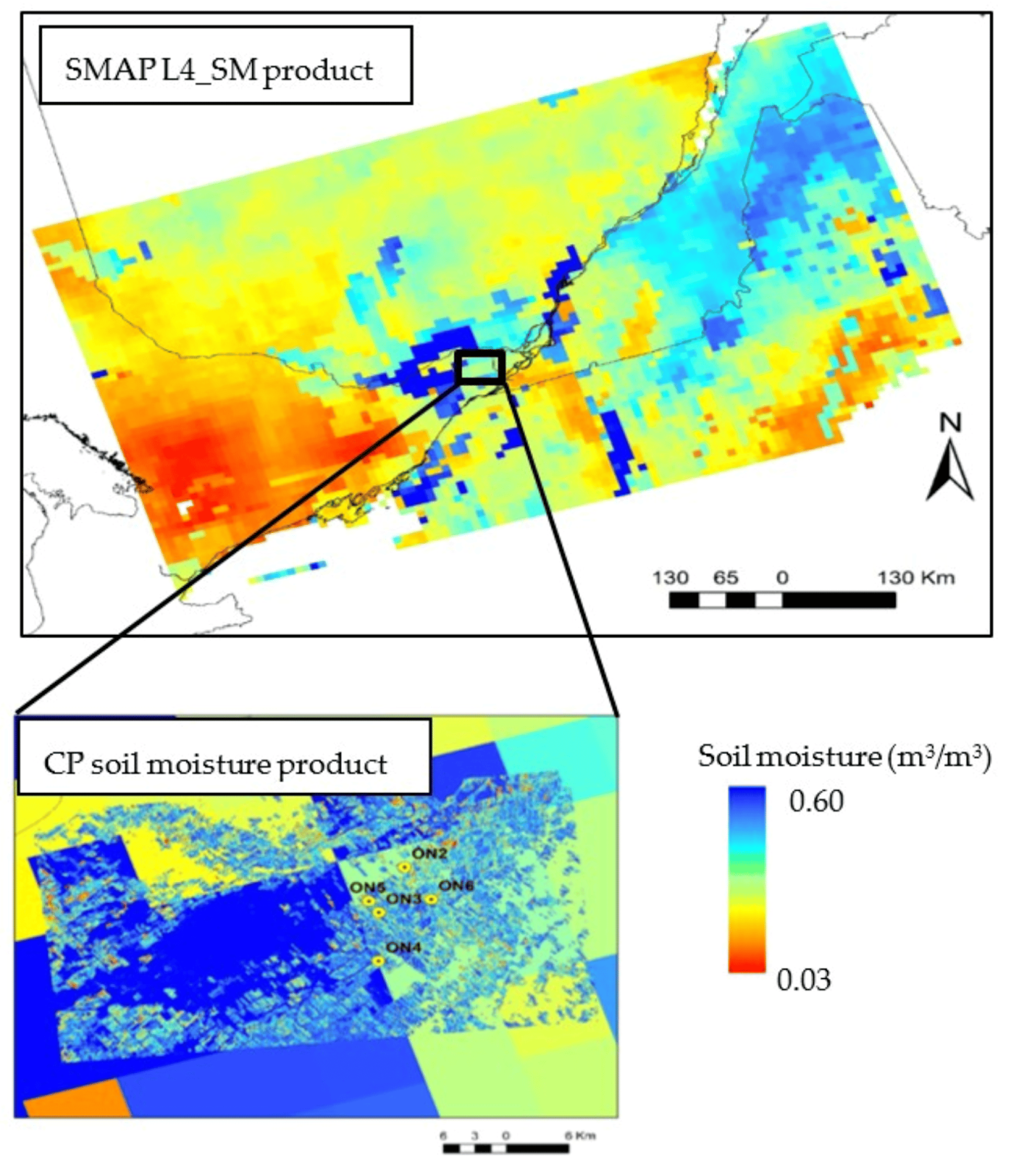
SAR Compact Polarimetry for Soil Moisture Retrieval. Source: MDPI
9. HSI-SAR (Hyperspectral Imaging SAR): This approach combines hyperspectral imaging with SAR capabilities. By capturing a wide spectrum of frequencies along with radar data, HSI-SAR can provide detailed information about the material properties and changes in a landscape, useful in mineral exploration and environmental monitoring.
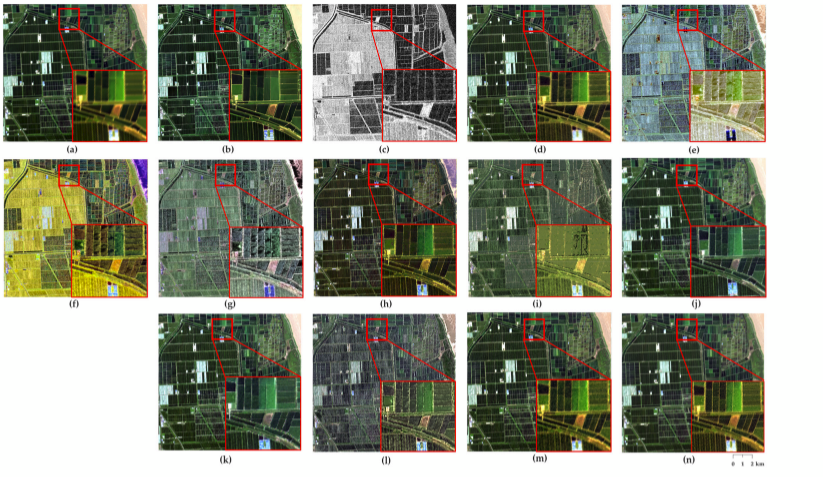
Multispecral imagery & radar images. Source: ResearchGate
10. Bistatic and Multistatic SAR: Unlike traditional monostatic SAR where the transmitter and receiver are colocated (often on the same platform), bistatic SAR involves separate locations for the transmitter and receiver. Multistatic SAR includes multiple receivers and possibly multiple transmitters. These configurations can enhance spatial resolution and reduce temporal decorrelation, offering advantages in urban mapping and complex environment monitoring.
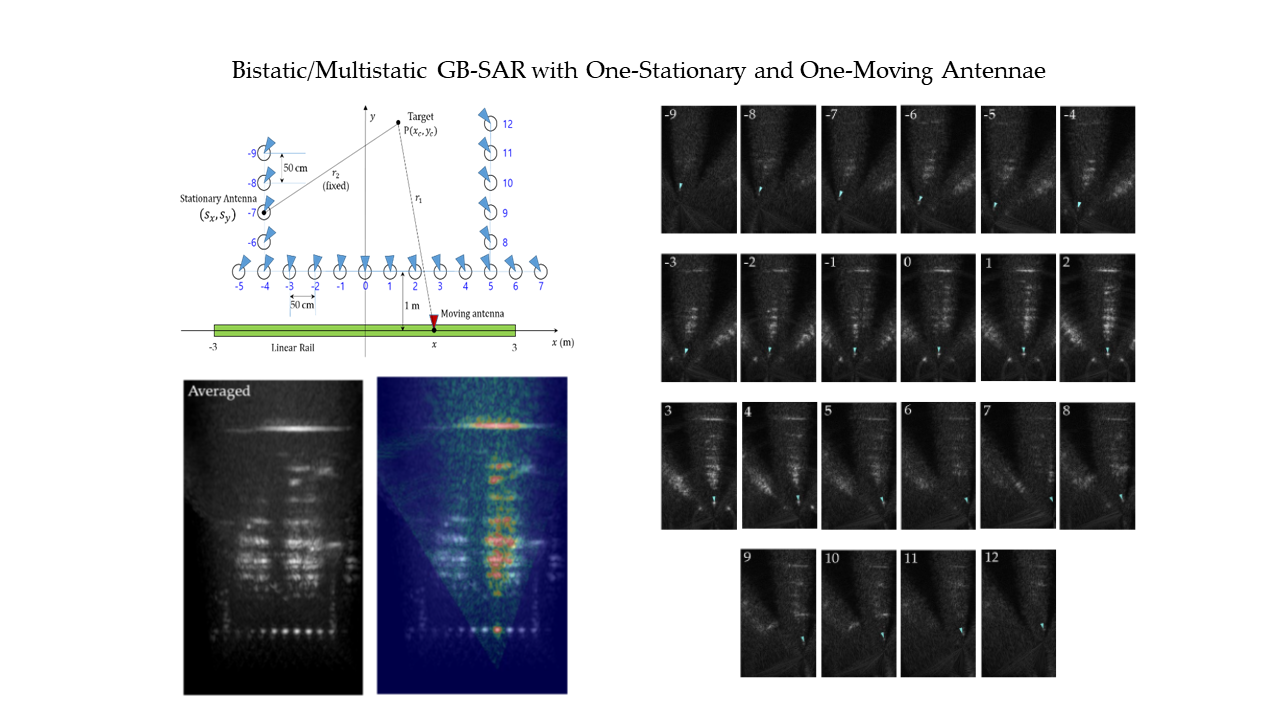
The idea of Bi- and Multistatic SAR. Souce: MDPI
Conclusions
These techniques extend the capabilities of SAR technology, enabling diverse applications across various fields such as geology, hydrology and agriculture.
The potential for growth in SAR technology is significant, particularly as the satellite industry continues to evolve. Advances in satellite tech, such as the development of smaller, more cost-effective satellites and the increased launch opportunities provided by private space ventures, are expanding access to SAR data. This progress allows for more frequent updates and greater coverage, enhancing the ability to monitor and respond to global changes.
Moreover, innovations in data processing, ML, and AI are making it possible to extract more detailed and complex information from SAR data. As these technologies continue to mature, the number of specialized SAR techniques and their applications are likely to grow, leading to more precise, efficient, and versatile remote sensing capabilities. This evolution will put SAR technology as an irreplaceable tool in our increasingly approach to managing resources and addressing challenges.
Did you like this post about SAR techniques? Read more and subscribe to our monthly newsletter!








